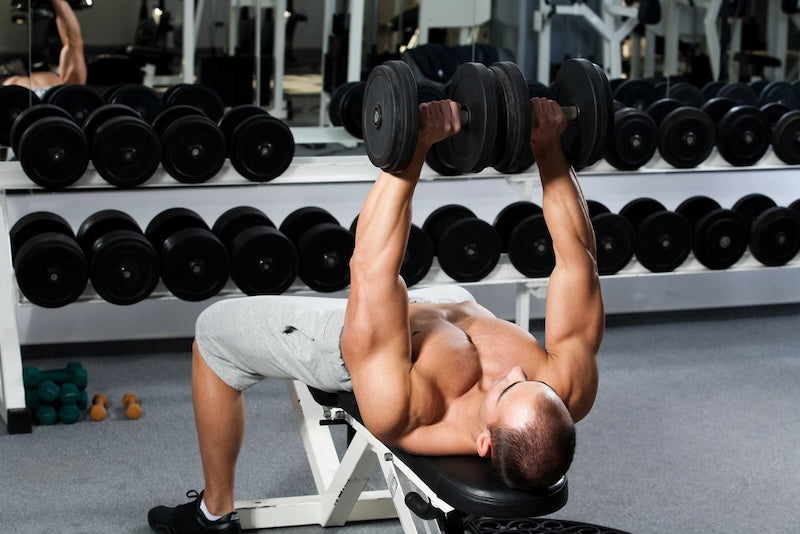Want to get more from your resistance training? You might want to try cluster sets.
I know, I know. Another training method being hyped up online. But research suggests that cluster sets could provide some pretty neat benefits for your training.
Interested? Let’s explain all you need to know about cluster sets, and how to integrate them into your lifting routine.
What Are Cluster Sets?

Cluster sets are a resistance training method where a single set is divided into smaller groups of repetitions ("clusters") separated by brief intra-set rest periods (~10–30 seconds).
They’re designed to improve strength, power, and endurance while managing fatigue more effectively than traditional sets.
Cluster sets allow for greater intensity and volume without accumulating excessive fatigue, making it a valuable tool for both athletes and casual lifters.
Still confused? Here’s an example.
-
Instead of performing 6 reps in one continuous set, a cluster set might break this into 3 clusters of 2 reps with 10-20 seconds of rest between each cluster.
-
Or, instead of 1 set of 10 continuous reps, do separate clusters of 3, 3 and 4 reps with 15-second pauses between clusters.
This brief recovery period helps you maintain better form, lift heavier loads, and produce more force output across the entire set.
How Are Cluster Sets Different from Traditional Set Structures?

The primary difference between cluster sets and traditional sets lies in how the reps are distributed.
Conventional strength training typically involves continuous reps followed by a set rest period.
You might do 4 sets of 10 reps, with all 10 reps in sequence, followed by a one-minute rest, then the next set of 10, and so on.
In contrast, cluster sets have short rest intervals within a single set. You might do the same number of reps, but with a few short breaks in between, giving your body a little more space to recover, and maintaining output capacity towards the end of the set (when you would usually struggle to hammer out the last few reps).
What Does the Research Say About Cluster Sets?

Let’s dive into the question you’ve been asking from the start; do cluster sets really work?
Here’s what the research says.
Strength Gains
Research indicates that cluster set training has no difference in results when it comes to building strength, compared to traditional sets.
A 2021 meta-analysis looked at cluster sets vs traditional sets across 29 separate studies, and no difference was observed in terms of strength and power output when training volume was equal.
It is suggested, however, that cluster sets allow the same strength gains at lower perceived effort levels, which indicates that cluster sets may help you increase training volume, and thus increase strength adaptations.
Muscle Hypertrophy (Muscle Growth)
The same meta-analysis above found that hypertrophy (aka muscle growth) was the same between cluster sets and traditional sets, when training volume was even.
Other studies support these findings – in one such study, participants doing cluster sets and traditional sets both achieved statistically significant increases in lean muscle mass and thickness over an 8-week training program, with no significant differences between the two groups.
Muscular Endurance
The same goes for muscular endurance adaptations; when the total number of reps are even, there’s no significant difference in results between doing traditional sets or cluster sets.
However, it’s important to note that one study found more frequent rest intervals (i.e. cluster sets) allowed participants to perform 5 times as many reps as with traditional sets (thus providing greater overall benefits).
Power and Athletic Performance

The research does show that cluster sets allow for higher power output, explosiveness, and athletic performance.
Cluster sets have been shown to provide better results in terms of explosive actions (like vertical jumps and explosive pushes), and allow athletes to perform more reps, and a greater number of high-quality reps.
Fatigue Management and Recovery
Managing fatigue appears to be one of the top benefits of cluster sets.
Cluster sets reduce perceived effort, physical stress, blood lactate levels and acute fatigue in both the muscles and nervous system.
It’s believed that the small intra-set rest periods allow a partial replenishment of phosphocreatine and ATP, along with allowing a brief reset of the nervous system – letting you do more reps, at a higher standard.
Do Cluster Sets Work?
So, based on the research, do cluster sets actually work? Or are they just another overhyped fad?
Cluster sets on their own don’t provide better gains for strength, power or hypertrophy. The research pretty clearly shows that cluster sets and traditional sets provide the same benefits, when reps are equal.
However, it’s also proven that cluster sets reduce physical fatigue and perceived effort. In essence, your 10 reps are easier with cluster sets than traditional sets (and remember, the benefits are the same).
That allows you to do more reps, which will deliver greater benefits.
In this sense, we can quite clearly say yes, cluster sets do work.
Who Are Cluster Sets Good For?

Cluster sets can benefit wide range of people, with a variety of goals, including:
-
Strength Athletes (Powerlifters, Weightlifters): Ideal for maximizing strength without over-fatiguing the central nervous system.
-
Bodybuilders: Useful for maintaining intensity while managing fatigue, leading to better muscle recruitment.
-
Athletes in Explosive Sports: Beneficial for sprinters, football players, and combat athletes who need to sustain high-intensity efforts repeatedly.
-
Intermediate and Advanced Lifters: Best suited for those who already have a solid foundation in strength training and are looking for an advanced technique to break plateaus.
How to Use Cluster Sets in Your Training
It’s pretty easy to start incorporating cluster sets in your training.
Just break up your regular sets with 2-3 short (10-30 seconds) rest periods spaced evenly between.
The key thing to understand is what you want to gain from doing cluster sets.
If you want to lower fatigue and exertion, and maintain better form towards the end of your sets, you can just break your regular training volume into 3-4 clusters.
However, if you want to improve your gains, you’ll want to utilize cluster sets to increase your training volume.
So, instead of doing 4x10 reps, for example, you might increase it to 15 reps, taking several short breaks during each set.
Just be careful not to push yourself too far and too fast. Switching to cluster sets won’t automatically turn you from Steve Rogers into Captain America. Start slow, and work your training volume up.
Potential Drawbacks and Limitations of Cluster Sets

While cluster sets offer some nice benefits, there are some potential downsides.
These include:
-
Complexity: Cluster sets require more precise timing, planning and tracking, making them less practical for beginners.
-
More time consuming: Extra rest in each set adds time to your workout, so it might not be ideal if you’re trying to get a quick workout in on your lunch break.
-
Potential for less gains: While studies show similar benefits for strength, power and hypertrophy between clusters and traditional sets, the metabolic stress may be lower, which may (though not necessarily) decrease muscular adaptations over time.
Realistically, there are no major downsides to cluster sets. Just remember that you need to use clusters to increase your training volume if you want to really get any meaningful benefits.
Final Thoughts
Cluster sets are an interesting tool for any athletes or casual gym-goers.
They basically allow you to train “harder easier” – maintain a high intensity, for more reps, with less fatigue and effort.
Don’t go in thinking that breaking your 12 reps into 4 clusters of 3 will make you blow up like the Hulk; but used smartly, cluster sets could help you push through fatigue and get more out of your training.
Also Read:
Slow Reps or Fast Reps: Which Is Best for Strength and Muscle Growth?
Farmer's Walk: Benefits, Techniques, Variations, and Programming




